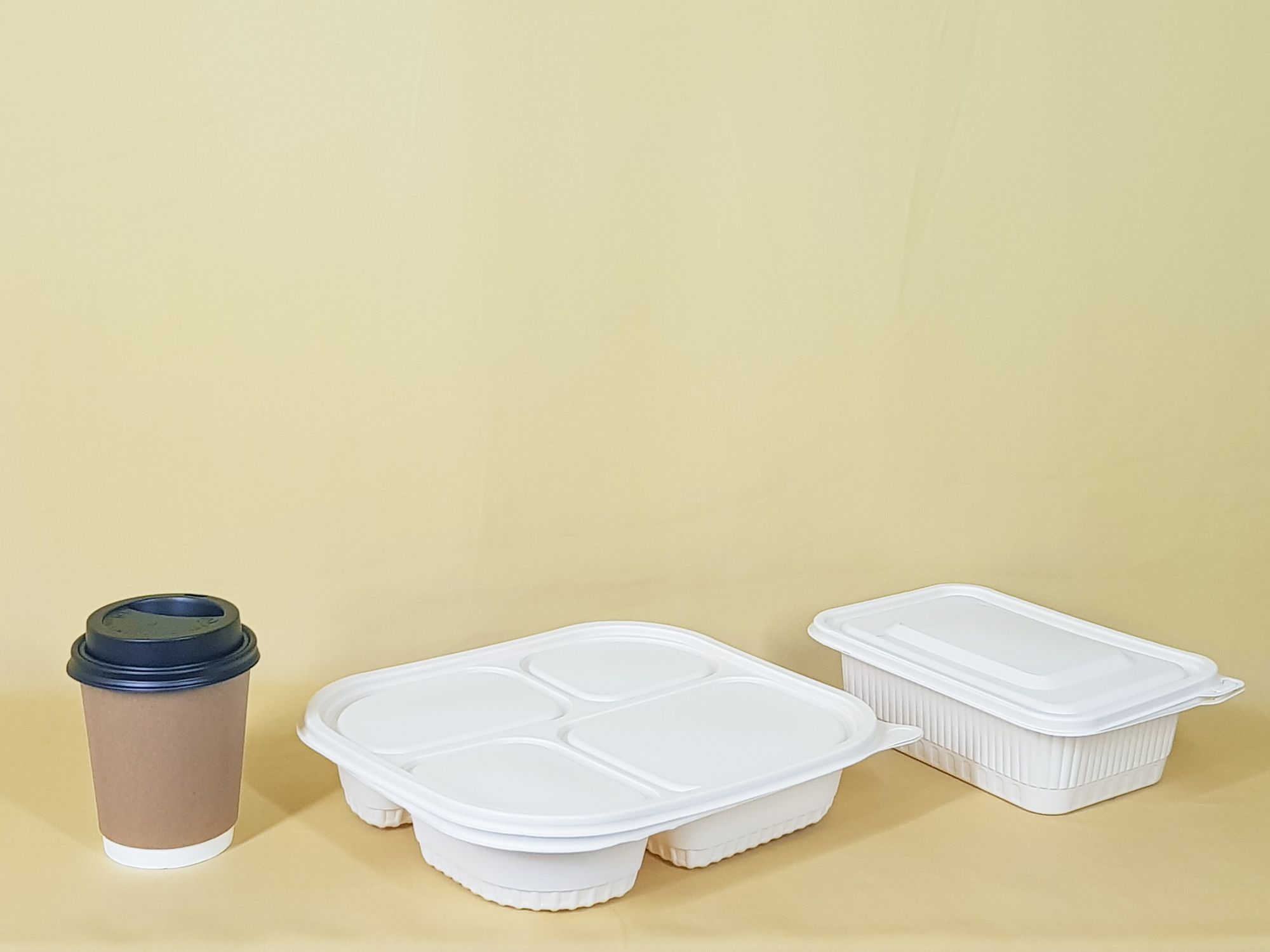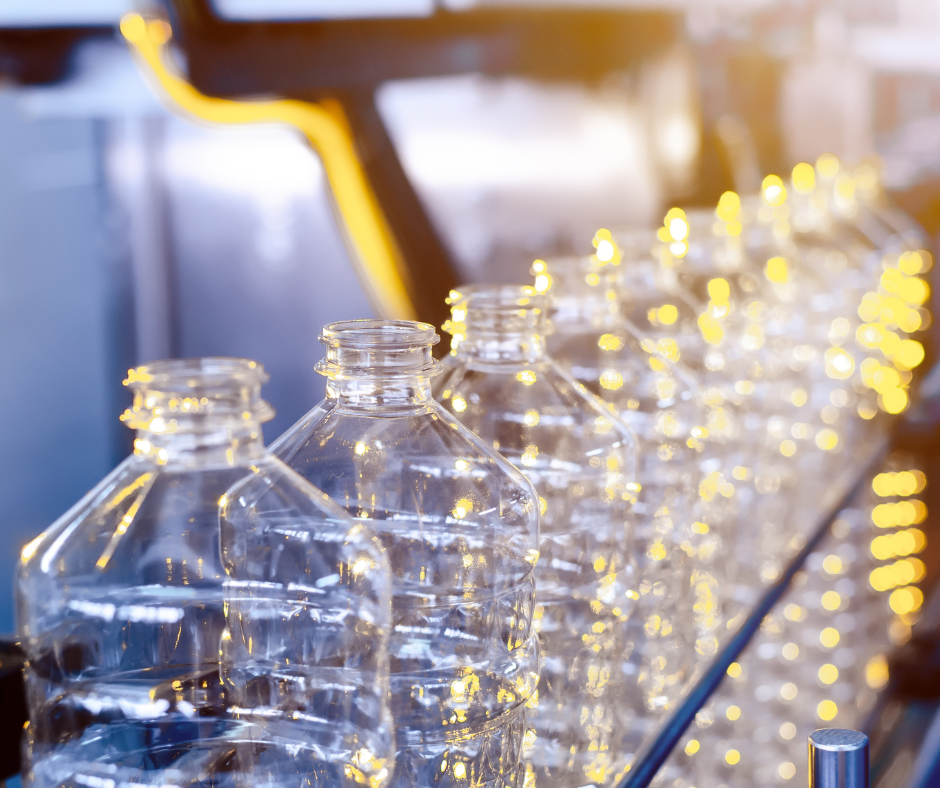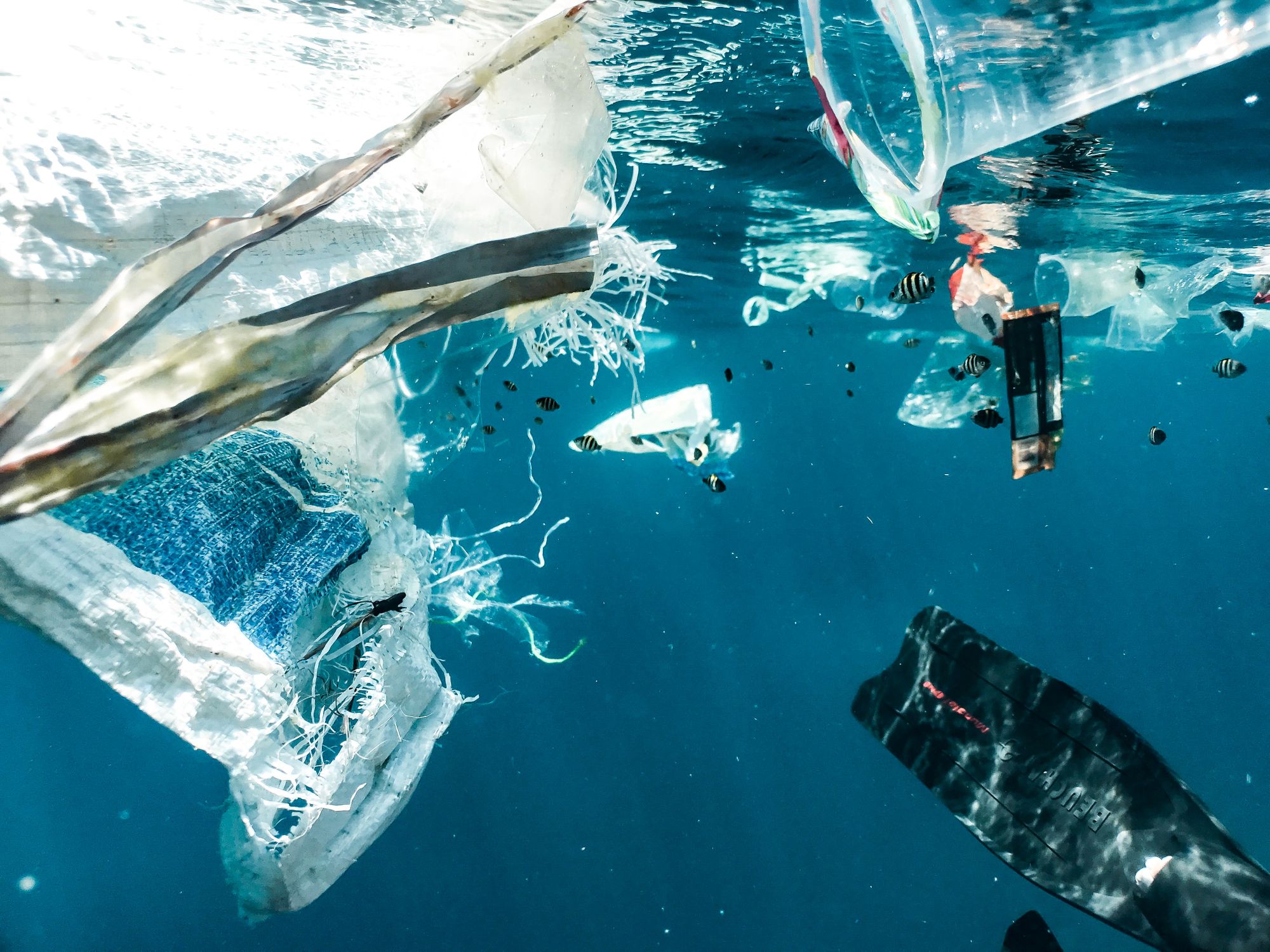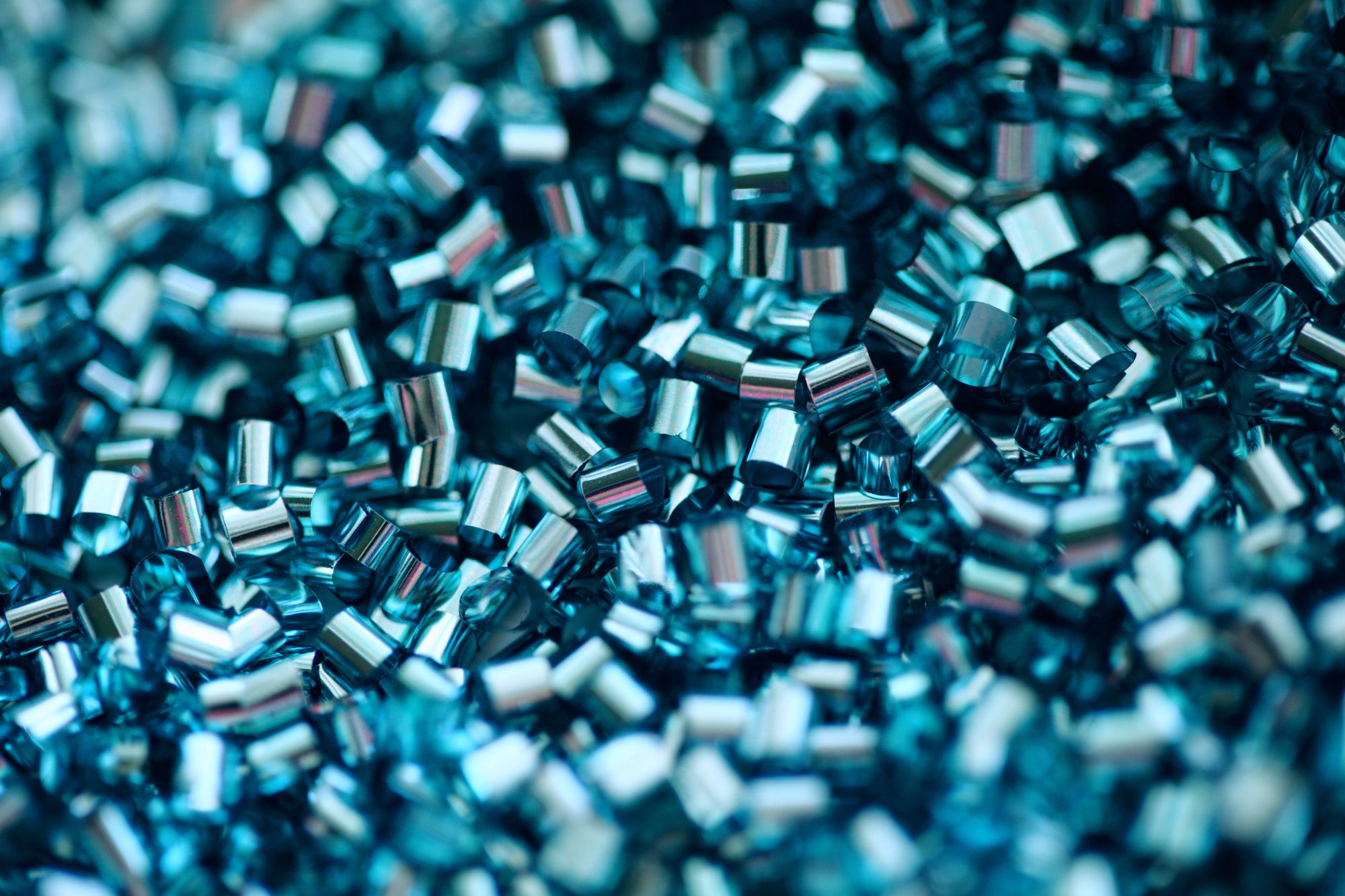Do you want to know about the different types of plastics, their unique properties, and their specific uses?
If your answer to this question is yes, then you are on the right page.

Plastics are synthetic materials made from polymers that are extensively used in various industries because of their versatile properties such as durability, flexibility, and low cost of production. There are different types of plastics available, each with unique properties which make them suitable for specific applications.
This article will take you through the most common types of plastics and their uses in detail by covering the following topics:
- What Are the Different Types of Plastics and Their Uses?
- FAQs related to Different Types of Plastics and Their Uses
- How can Deskera Help You?
- Key Takeaways
- Related Articles
What Are the Different Types of Plastics and Their Uses?
There are several types of plastics, each with unique properties that make them suitable for specific applications. Here are some of the most common types of plastics and their uses:
Polyethylene (PE)
Polyethylene (PE) is a thermoplastic polymer made from ethylene monomer. It is the most widely used plastic in the world, accounting for over 30% of all plastic production. PE is known for its versatility, durability, and resistance to moisture and chemicals. It is available in several different grades, each with its own specific properties and applications.
Here are some key features and uses of different types of PE:
- Low-density polyethylene (LDPE): This type of PE is flexible and transparent, with excellent chemical resistance. It is commonly used in packaging films, coatings, and injection-molded products.
- High-density polyethylene (HDPE): This type of PE is more rigid than LDPE and has better mechanical properties, including strength, stiffness, and impact resistance. It is commonly used in pipe and conduit, packaging, and construction products.
- Linear low-density polyethylene (LLDPE): This type of PE has improved mechanical properties compared to LDPE and can be processed at lower temperatures. It is commonly used in stretch wrap, liners, and film applications.
- Ultra-high molecular weight polyethylene (UHMWPE): This type of PE has a very high molecular weight and excellent abrasion resistance. It is commonly used in bearings, gears, and other mechanical parts.
PE is also widely used in the medical industry due to its biocompatibility and sterilizability. It is commonly used in medical devices such as syringes, catheters, and implantable devices.
In addition, PE is often recycled due to its high demand and low cost. It is a popular choice for recycling programs, and recycled PE can be used in a variety of applications, including packaging, construction products, and consumer goods.
Overall, PE is a versatile and widely used plastic that offers many benefits for various applications, including durability, chemical resistance, and recyclability.
Low-Density Polyethylene (LDPE)
Low-density polyethylene (LDPE) is a thermoplastic polymer made from the monomer ethylene. It is a versatile plastic that is known for its flexibility, toughness, and transparency. Here are some key features and uses of LDPE:
- Flexibility: LDPE is a flexible plastic that can be easily molded into different shapes and sizes. This makes it suitable for a wide range of applications, such as packaging films and bags.
- Toughness: LDPE is a tough plastic that can withstand impacts and punctures, making it suitable for applications such as protective packaging and liners.
- Transparency: LDPE has good optical properties and is transparent, making it suitable for applications such as packaging films and bags.
- Chemical Resistance: LDPE has good chemical resistance, making it suitable for applications such as laboratory equipment and chemical storage containers.
- Recyclable: LDPE is a recyclable material, and recycling programs are available for LDPE products such as grocery bags and plastic wraps.
LDPE is used in many different applications, including:
- Packaging: LDPE is used in the production of packaging materials such as plastic bags, shrink wrap, and stretch wrap due to its flexibility and toughness.
- Agricultural Films: LDPE is used in the production of agricultural films such as greenhouse films and silage bags due to its transparency and durability.
- Toys: LDPE is used in the production of toys such as action figures and dolls due to its flexibility and ease of molding.
- Laboratory Equipment: LDPE is used in the production of laboratory equipment such as beakers and test tubes due to its chemical resistance.
While LDPE has many benefits, it is important to note that it is not biodegradable and can take hundreds of years to decompose in landfills. Therefore, it is important to recycle LDPE products whenever possible to minimize their impact on the environment.
High-Density Polyethylene (HDPE)
High-Density Polyethylene (HDPE) is a thermoplastic polymer made from the monomer ethylene. It is a versatile plastic that is known for its strength, durability, and chemical resistance. Here are some key features and uses of HDPE:
- Strength and Durability: HDPE is a strong and durable plastic that can withstand heavy loads and harsh environments.
- Chemical Resistance: HDPE has excellent chemical resistance, making it ideal for use in applications such as chemical storage tanks, pipes, and liners.
- UV Resistance: HDPE has good UV resistance and does not degrade or discolor in sunlight, making it suitable for outdoor applications such as playground equipment and irrigation pipes.
- Lightweight: HDPE is a lightweight plastic, making it easy to handle and transport.
- Recyclable: HDPE is a highly recyclable material, and recycling programs are available for HDPE products such as milk jugs and plastic bottles.
HDPE is used in many different applications, including:
- Pipes and Fittings: HDPE is commonly used in the production of pipes and fittings for applications such as water and gas distribution due to its strength, durability, and chemical resistance.
- Packaging: HDPE is used in the production of packaging materials such as milk jugs, detergent bottles, and food containers due to its strength and recyclability.
- Geomembranes: HDPE is used in the production of geomembranes for applications such as landfill liners and pond liners due to its chemical resistance and durability.
- Playground Equipment: HDPE is used in the production of playground equipment such as slides and climbing structures due to its UV resistance and durability.
While HDPE has many benefits, it is important to note that it is not biodegradable and can take hundreds of years to decompose in landfills. Therefore, it is important to recycle HDPE products whenever possible to minimize their impact on the environment.
Linear Low-Density Polyethylene (LLDPE)
Linear low-density polyethylene (LLDPE) is a thermoplastic polymer made from the monomer ethylene. It is a versatile plastic that is known for its strength, flexibility, and toughness. Here are some key features and uses of LLDPE:
- Strength: LLDPE has excellent tensile strength and is able to withstand heavy loads and stresses without breaking or deforming.
- Flexibility: LLDPE is a flexible plastic that can be easily molded into different shapes and sizes. This makes it suitable for a wide range of applications, such as packaging films and bags.
- Toughness: LLDPE is a tough plastic that can withstand impacts and punctures, making it suitable for applications such as protective packaging and liners.
- Chemical Resistance: LLDPE has good chemical resistance, making it suitable for applications such as laboratory equipment and chemical storage containers.
- Recyclable: LLDPE is a recyclable material, and recycling programs are available for LLDPE products such as grocery bags and plastic wraps.
LLDPE is used in many different applications, including:
- Packaging: LLDPE is used in the production of packaging materials such as plastic bags, shrink wrap, and stretch wrap due to its flexibility and toughness.
- Geomembranes: LLDPE is used in the production of geomembranes for applications such as landfill liners and pond liners due to its chemical resistance and durability.
- Agricultural Films: LLDPE is used in the production of agricultural films such as greenhouse films and silage bags due to its transparency and durability.
- Toys: LLDPE is used in the production of toys such as action figures and dolls due to its flexibility and ease of molding.
- Wire and Cable Coatings: LLDPE is used in the production of wire and cable coatings due to its high dielectric strength and good electrical insulation properties.
While LLDPE has many benefits, it is important to note that it is not biodegradable and can take hundreds of years to decompose in landfills. Therefore, it is important to recycle LLDPE products whenever possible to minimize their impact on the environment.
Ultra-High Molecular Weight Polyethylene (UHMWPE)
Ultra-high molecular weight polyethylene (UHMWPE) is a type of thermoplastic polymer with a very high molecular weight. It is known for its exceptional strength, impact resistance, and low friction coefficient. Here are some key features and uses of UHMWPE:
- Strength: UHMWPE is an extremely strong plastic with high tensile strength, making it suitable for applications that require high load-bearing capacity.
- Impact Resistance: UHMWPE has excellent impact resistance, making it suitable for applications that require a high level of toughness and durability.
- Low Friction Coefficient: UHMWPE has a very low friction coefficient, making it suitable for applications that require low friction or self-lubrication.
- Chemical Resistance: UHMWPE has good chemical resistance, making it suitable for applications that require resistance to corrosive materials.
- Biocompatibility: UHMWPE is biocompatible, meaning that it is not toxic or harmful to living tissue. This makes it suitable for use in medical implants such as artificial joints.
UHMWPE is used in many different applications, including:
- Industrial: UHMWPE is used in industrial applications such as conveyor belts, bearings, and gears due to its strength, low friction coefficient, and durability.
- Medical: UHMWPE is used in medical implants such as artificial joints due to its biocompatibility and resistance to wear and tear.
- Defense: UHMWPE is used in the production of body armor and vehicle armor due to its exceptional strength and impact resistance.
- Sports Equipment: UHMWPE is used in the production of sports equipment such as ski bases, snowboards, and skateboards due to its low friction coefficient and durability.
While UHMWPE has many benefits, it is important to note that it can be difficult to process and machine due to its high molecular weight. It is also susceptible to UV degradation and may require additives to improve its UV resistance. Despite these limitations, UHMWPE is a highly versatile and valuable material that is used in a wide range of applications.
Polypropylene (PP)
Polypropylene (PP) is a thermoplastic polymer that is widely used for its excellent chemical and moisture resistance, high melting point, and good mechanical properties. It is produced by the polymerization of propylene monomer.
Here are some key features and uses of Polypropylene (PP):
- High Chemical Resistance: PP has excellent resistance to many chemicals, acids, and bases, making it an ideal material for use in chemical processing, medical equipment, and laboratory equipment.
- Good Mechanical Properties: PP has good stiffness, toughness, and resistance to impact, making it suitable for use in a variety of applications such as packaging, automotive components, and furniture.
- Good Electrical Properties: PP is an excellent insulator, making it useful for electrical and electronic applications, such as cable insulation and electrical switches.
- High Melting Point: PP has a high melting point, making it suitable for use in high-temperature applications such as food containers, hot-fill bottles, and microwaveable containers.
- Lightweight: PP is a lightweight material, making it ideal for use in applications where weight is a concern, such as automotive components and sports equipment.
PP is also commonly used in the production of non-woven fabrics, which are used in a variety of applications such as medical products, protective clothing, and home furnishings.
PP is known for its recyclability and is often used in recycling programs due to its high demand and low cost. Recycled PP can be used in a variety of applications, including automotive parts, packaging, and household products.
Overall, PP is a versatile and widely used plastic that offers many benefits for various applications, including chemical and moisture resistance, good mechanical properties, and recyclability.
Polyvinyl Chloride (PVC)
Polyvinyl Chloride (PVC) is a thermoplastic polymer made from vinyl chloride monomer. PVC is a versatile plastic with a wide range of applications due to its excellent durability, chemical resistance, and low cost. Here are some key features and uses of PVC:
- Durable and Chemical-resistant: PVC is a strong and durable plastic with excellent resistance to many chemicals, acids, and bases. It is used in applications that require resistance to harsh environments, such as pipes, roofing materials, and chemical processing equipment.
- Versatile: PVC can be formulated in many different ways, resulting in a range of different properties, such as hardness, flexibility, and transparency. This versatility allows PVC to be used in a wide range of applications, such as flooring, medical devices, and electrical cable insulation.
- Cost-effective: PVC is a relatively low-cost plastic compared to other engineering plastics, making it an economical choice for many applications.
- Fire-resistant: PVC is inherently flame-resistant and is often used in applications that require fire-retardant properties, such as electrical conduits and cables.
- Recyclable: PVC is a recyclable material, and recycling programs are available for PVC products, such as pipes and window profiles.
PVC is used in many different applications, including:
- Construction materials: PVC is widely used in the construction industry for applications such as window profiles, piping, roofing materials, and siding.
- Electrical insulation: PVC is an excellent insulator and is used for electrical cables, wires, and connectors.
- Medical devices: PVC is a commonly used material in medical devices such as blood bags, tubing, and surgical gloves.
- Automotive industry: PVC is used in the production of automotive components such as interior trim, door panels, and dashboard covers.
While PVC has many benefits, it is important to note that it can release toxic fumes when burned. Therefore, it is crucial to handle and dispose of PVC products properly to minimize any negative impact on the environment and human health.
Polystyrene (PS)
Polystyrene (PS) is a thermoplastic polymer made from styrene monomers. It is a lightweight and rigid plastic with good insulation properties. Here are some key features and uses of PS:
- Lightweight and Rigid: PS is a lightweight plastic that is easy to handle and transport. It is also a rigid material, making it ideal for use in applications such as packaging and consumer goods.
- Excellent Insulation: PS is a good insulator of heat and sound, making it useful in a variety of applications such as insulation panels, refrigeration, and packaging.
- Versatile: PS can be formulated in many different ways, resulting in a range of different properties, such as transparency, hardness, and flexibility. This versatility allows PS to be used in a wide range of applications, such as food packaging, disposable cups, and CD cases.
- Cost-effective: PS is a relatively low-cost plastic compared to other engineering plastics, making it an economical choice for many applications.
- Recyclable: PS is a recyclable material, and recycling programs are available for PS products, such as packaging and foam products.
PS is used in many different applications, including:
- Food packaging: PS is commonly used in food packagings such as disposable plates, cups, and food containers due to its low cost and good insulation properties.
- Insulation: PS foam is used as an insulation material in building construction, such as insulation panels for walls and roofs.
- Consumer goods: PS is used in a variety of consumer goods such as toys, CD cases, and electronics packaging.
- Medical devices: PS is used in medical devices such as Petri dishes and disposable test tubes due to its low cost and transparency.
While PS has many benefits, it is important to note that it can take hundreds of years to degrade in the environment and can release harmful chemicals when burned. Therefore, it is important to handle and dispose of PS products properly to minimize any negative impact on the environment and human health.
Polyethylene Terephthalate (PET)
Polyethylene Terephthalate (PET) is a thermoplastic polymer made from ethylene glycol and terephthalic acid. It is a strong, lightweight, and transparent plastic with good barrier properties against moisture, gasses, and aromas. Here are some key features and uses of PET:
- Strong and Lightweight: PET is a strong and lightweight plastic, making it ideal for use in applications such as packaging and consumer goods.
- Good Barrier Properties: PET has good barrier properties against moisture, gases, and aromas, making it useful in a variety of applications, such as food and beverage packaging.
- Versatile: PET can be formulated in many different ways, resulting in a range of different properties, such as transparency, toughness, and flexibility. This versatility allows PET to be used in a wide range of applications, such as clothing, electronics, and automotive parts.
- Recyclable: PET is a recyclable material, and recycling programs are available for PET products, such as bottles and food containers.
- Cost-effective: PET is a relatively low-cost plastic compared to other engineering plastics, making it an economical choice for many applications.
PET is used in many different applications, including:
- Food and beverage packaging: PET is commonly used in food and beverage packaging, such as bottles, containers, and trays, due to its good barrier properties and transparency.
- Textiles: PET is used to make fabrics such as polyester, which is used in clothing, upholstery, and carpets.
- Electronics: PET is used in the production of electronic components such as insulation films and cable wraps.
- Automotive industry: PET is used in the production of automotive components such as dashboards and interior trims.
While PET has many benefits, it is important to note that it can take hundreds of years to degrade in the environment if not properly disposed of. Therefore, it is important to handle and dispose of PET products properly to minimize any negative impact on the environment and human health.
Acrylonitrile Butadiene Styrene (ABS)
Acrylonitrile Butadiene Styrene (ABS) is a thermoplastic polymer made by polymerizing styrene and acrylonitrile in the presence of polybutadiene. It is a strong, lightweight, and impact-resistant plastic with good thermal and electrical insulation properties. Here are some key features and uses of ABS:
- Strong and Impact-resistant: ABS is a strong and impact-resistant plastic, making it ideal for use in applications that require durability and toughness.
- Lightweight: ABS is a lightweight plastic, making it easy to handle and transport.
- Good Thermal and Electrical Insulation: ABS has good thermal and electrical insulation properties, making it useful in applications such as electronics and automotive components.
- Versatile: ABS can be formulated in many different ways, resulting in a range of different properties, such as transparency, hardness, and flexibility. This versatility allows ABS to be used in a wide range of applications, such as consumer goods, toys, and furniture.
- Recyclable: ABS is a recyclable material, and recycling programs are available for ABS products, such as automotive parts and consumer goods.
ABS is used in many different applications, including:
- Automotive industry: ABS is used in the production of automotive components such as dashboards, trims, and body parts due to its strength and impact resistance.
- Electronics: ABS is used in the production of electronic components such as computer keyboards, housings, and connectors due to its good thermal and electrical insulation properties.
- Consumer goods: ABS is used in a variety of consumer goods such as toys, luggage, and furniture due to its strength and durability.
- Construction: ABS is used in construction applications such as pipes, fittings, and roofing due to its resistance to heat and chemicals.
While ABS has many benefits, it is important to note that it can release toxic fumes when burned. Therefore, it is important to handle and dispose of ABS products properly to minimize any negative impact on the environment and human health.
Polycarbonate (PC)
Polycarbonate (PC) is a thermoplastic polymer made from bisphenol A (BPA) and phosgene. It is a strong, transparent, and lightweight plastic with excellent impact resistance and high-temperature tolerance. Here are some key features and uses of polycarbonate:
- Strong and Transparent: Polycarbonate is a strong and transparent plastic, making it ideal for use in applications that require both strength and clarity.
- Lightweight: Polycarbonate is a lightweight plastic, making it easy to handle and transport.
- Excellent Impact Resistance: Polycarbonate has excellent impact resistance, making it useful in applications such as safety glasses, helmet visors, and bullet-resistant windows.
- High-Temperature Tolerance: Polycarbonate has a high-temperature tolerance, making it useful in applications such as electrical components and automotive parts.
- Versatile: Polycarbonate can be formulated in many different ways, resulting in a range of different properties, such as flexibility, toughness, and heat resistance. This versatility allows polycarbonate to be used in a wide range of applications, such as medical devices, sports equipment, and consumer goods.
- Recyclable: Polycarbonate is a recyclable material, and recycling programs are available for polycarbonate products, such as CDs, DVDs, and electronic components.
Polycarbonate is used in many different applications, including:
- Electrical components: Polycarbonate is used in the production of electrical components such as circuit breakers, connectors, and switches due to its high-temperature tolerance and excellent electrical insulation properties.
- Automotive industry: Polycarbonate is used in the production of automotive components such as headlight lenses, dashboard components, and interior trims due to its high-temperature tolerance and impact resistance.
- Construction: Polycarbonate is used in construction applications such as skylights, roofing, and safety glazing due to its strength and transparency.
- Medical devices: Polycarbonate is used in the production of medical devices such as incubators, surgical instruments, and medical tubing due to its biocompatibility and high-temperature tolerance.
While polycarbonate has many benefits, it is important to note that it can release BPA, a chemical that may have negative health effects, particularly in high concentrations. Therefore, it is important to handle and dispose of polycarbonate products properly to minimize any negative impact on the environment and human health.
Nylon (PA)
Nylon (PA) is a synthetic polymer made from repeating units of amide monomers. It is a strong, durable, and versatile plastic with good mechanical properties and abrasion resistance. Here are some key features and uses of nylon:
- Strong and Durable: Nylon is a strong and durable plastic, making it ideal for use in applications that require strength and toughness.
- Lightweight: Nylon is a lightweight plastic, making it easy to handle and transport.
- Abrasion Resistance: Nylon has good abrasion resistance, making it useful in applications such as gears, bearings, and conveyor belts.
- Chemical Resistance: Nylon has good chemical resistance, making it useful in applications such as fuel lines and chemical storage tanks.
- Versatile: Nylon can be formulated in many different ways, resulting in a range of different properties such as stiffness, toughness, and heat resistance. This versatility allows nylon to be used in a wide range of applications, such as textiles, automotive parts, and consumer goods.
- Recyclable: Nylon is a recyclable material, and recycling programs are available for nylon products, such as fishing nets and automotive parts.
Nylon is used in many different applications, including:
- Textiles: Nylon is used in the production of textiles such as stockings, sportswear, and parachutes due to its strength and durability.
- Automotive industry: Nylon is used in the production of automotive parts such as engine components, fuel lines, and airbag systems due to its strength and chemical resistance.
- Consumer goods: Nylon is used in a variety of consumer goods, such as toothbrushes, guitar strings, and kitchen utensils, due to its strength and versatility.
- Industrial applications: Nylon is used in industrial applications such as gears, bearings, and conveyor belts due to its abrasion resistance and strength.
While nylon has many benefits, it is important to note that it is not biodegradable and can take hundreds of years to decompose in landfills. Therefore, it is important to recycle nylon products whenever possible to minimize their impact on the environment.
Polymethyl Methacrylate (PMMA)
Polymethyl Methacrylate (PMMA) is a transparent thermoplastic polymer that is commonly known as acrylic or acrylic glass. It is made from the monomer methyl methacrylate and is known for its optical clarity, high impact resistance, and weather resistance. Here are some key features and uses of PMMA:
- Optical Clarity: PMMA is a transparent plastic that has excellent optical clarity, making it an ideal material for applications such as lenses, light fixtures, and displays.
- High Impact Resistance: PMMA has a high impact resistance and can withstand significant force without breaking or cracking, making it useful in applications such as safety shields and bullet-resistant windows.
- Weather Resistance: PMMA has good weather resistance and does not degrade or discolor in sunlight, making it suitable for outdoor applications such as signs and skylights.
- Lightweight: PMMA is a lightweight plastic, making it easy to handle and transport.
- Versatile: PMMA can be easily molded, machined, and fabricated, resulting in a wide range of different shapes and forms. This versatility allows PMMA to be used in a wide range of applications such as automotive parts, medical devices, and consumer goods.
- Recyclable: PMMA is a recyclable material, and recycling programs are available for PMMA products, such as automotive headlamps and signage.
PMMA is used in many different applications, including:
- Optical applications: PMMA is used in the production of optical components such as lenses, prisms, and light guides due to its excellent optical clarity.
- Automotive industry: PMMA is used in the production of automotive parts such as headlamps, taillights, and interior trim due to its weather resistance and lightweight properties.
- Medical devices: PMMA is used in the production of medical devices such as dental implants, prosthetics, and medical equipment housings due to its biocompatibility and ease of fabrication.
- Consumer goods: PMMA is used in a variety of consumer goods such as shower enclosures, aquariums, and furniture due to its versatility and optical clarity.
While PMMA has many benefits, it is important to note that it is not biodegradable and can take hundreds of years to decompose in landfills. Therefore, it is important to recycle PMMA products whenever possible to minimize their impact on the environment.
FAQs related to Different Types of Plastics and Their Uses
- What is polyethylene (PE) used for?
Polyethylene is used in a wide range of applications, including packaging, construction, and electrical insulation.
- What is the difference between high-density polyethylene (HDPE) and low-density polyethylene (LDPE)?
HDPE is more rigid and durable than LDPE, which is more flexible and has a lower melting point. HDPE is commonly used in applications where strength and rigidity are required, while LDPE is used for applications that require flexibility and ease of processing.
- What is polypropylene (PP) used for?
Polypropylene is used in a wide range of applications, including packaging, textiles, and automotive parts. It is known for its strength, durability, and resistance to heat and chemicals.
- What is polycarbonate (PC) used for?
Polycarbonate is used in a wide range of applications, including electronic components, automotive parts, and medical devices. It is known for its strength, clarity, and impact resistance.
- What is PVC used for?
PVC is used in a wide range of applications, including construction, electrical insulation, and medical devices. It is known for its durability and resistance to chemicals and weathering.
- What is PET used for?
PET is commonly used in the production of bottles, food packaging, and textiles. It is known for its clarity, strength, and ability to be recycled.
- What is polystyrene (PS) used for?
Polystyrene is used in a wide range of applications, including food packaging, insulation, and disposable cups and plates.
- What is ABS used for?
ABS is used in a wide range of applications, including automotive parts, toys, and household appliances. It is known for its strength, durability, and ability to be molded into complex shapes.
- What is nylon used for?
Nylon is commonly used in applications that require strength, durability, and abrasion resistance, such as textiles, automotive parts, and sports equipment.
- What is PMMA used for?
PMMA is commonly used in applications that require clarity, such as optical lenses, signs, and displays.
- What is LLDPE used for?
LLDPE is commonly used in applications that require flexibility and stretchability, such as packaging films, stretch wraps, and agricultural films.
- What is UHMWPE used for?
UHMWPE is commonly used in applications that require strength, durability, and impact resistance, such as body armor, medical implants, and industrial components.
- What is the difference between thermoplastics and thermosets?
Thermoplastics can be melted and reshaped multiple times, while thermosets cannot be reshaped once they have been formed.
- Can plastics be recycled?
Yes, many types of plastics can be recycled, although the specific recycling process and the types of products that can be produced from recycled plastics vary depending on the type of plastic.
- Are all plastics harmful to the environment?
While some types of plastics are more harmful to the environment than others, all plastics can have negative environmental impacts if not disposed of properly. Recycling and proper waste disposal can help minimize the environmental impact of plastics.
How can Deskera Help You?
Deskera is an all-in-one business management software that can help companies manage their inventory, supply chain, and production processes related to different types of plastics and their uses. Here are some ways in which Deskera can help:
- Inventory Management: Deskera can help companies track the inventory of different types of plastics and their components, ensuring that they have the right materials available to meet production needs.
- Production Planning: Deskera can help companies plan and manage production schedules for different types of plastics, ensuring that they can meet customer demand while optimizing production efficiency.
- Quality Control: Deskera can help companies maintain quality control standards for different types of plastics, ensuring that the products meet the required specifications and are safe for use.
- Traceability: Deskera can help companies track the history of different types of plastics, from raw materials to finished products, ensuring that they meet regulatory requirements and can be traced back in case of any issues.
- Supply Chain Management: Deskera can help companies manage their supply chain, from sourcing raw materials to delivering finished products to customers, ensuring that they have a streamlined and efficient supply chain.
Key Takeaways
- Polyethylene (PE): This is the most widely used plastic in the world, and it is used in a variety of applications, such as packaging, agriculture, and construction.
- Polypropylene (PP): This plastic is used in packaging, textiles, automotive components, and medical equipment.
- Polyvinyl Chloride (PVC): This plastic is used in building materials, electrical cables, and medical devices.
- Polystyrene (PS): This plastic is used in packaging, insulation, and disposable cutlery.
- Polyethylene Terephthalate (PET): This plastic is used in beverage bottles, food packaging, and textiles.
- Acrylonitrile Butadiene Styrene (ABS): This plastic is used in toys, automotive parts, and electronic housings.
- Polycarbonate (PC): This plastic is used in electronic components, automotive parts, and eyeglasses.
- Nylon (PA): This plastic is used in clothing, carpets, and mechanical parts.
- Polymethyl Methacrylate (PMMA): This plastic is used in signage, automotive parts, and architectural glazing.
Each of these plastics has unique properties that make them useful for specific applications. It's important to consider the properties of each type of plastic before choosing which one to use for a particular application.
Lastly, Deskera can help companies manage their entire plastic manufacturing process, from inventory management to production planning and quality control, ensuring that they can produce high-quality products efficiently and cost-effectively.
Related Articles














